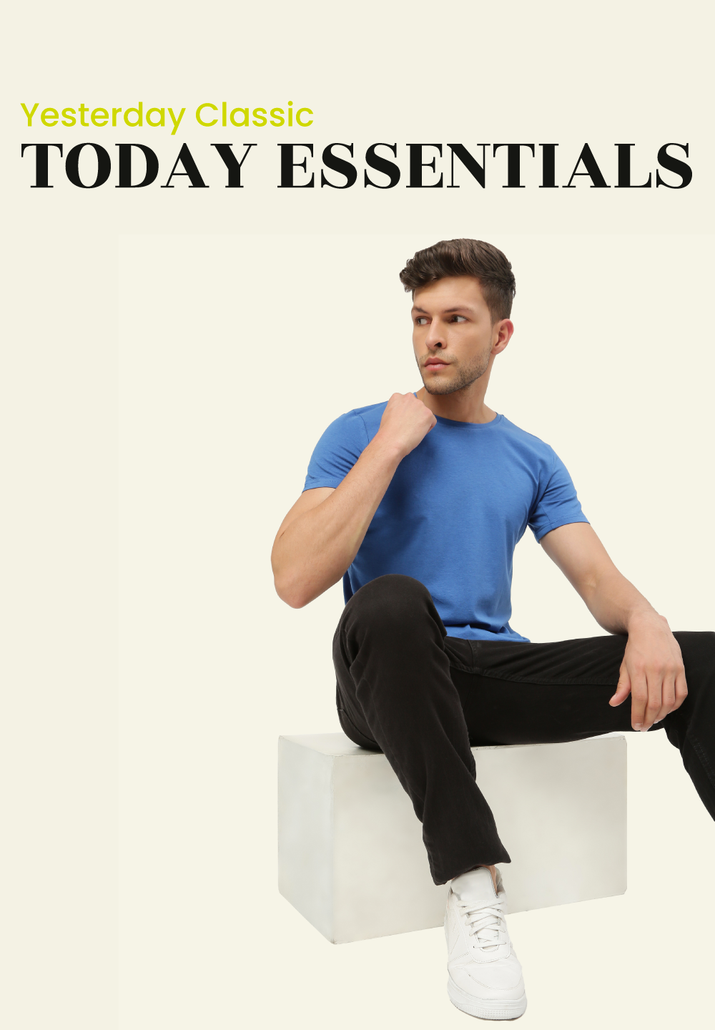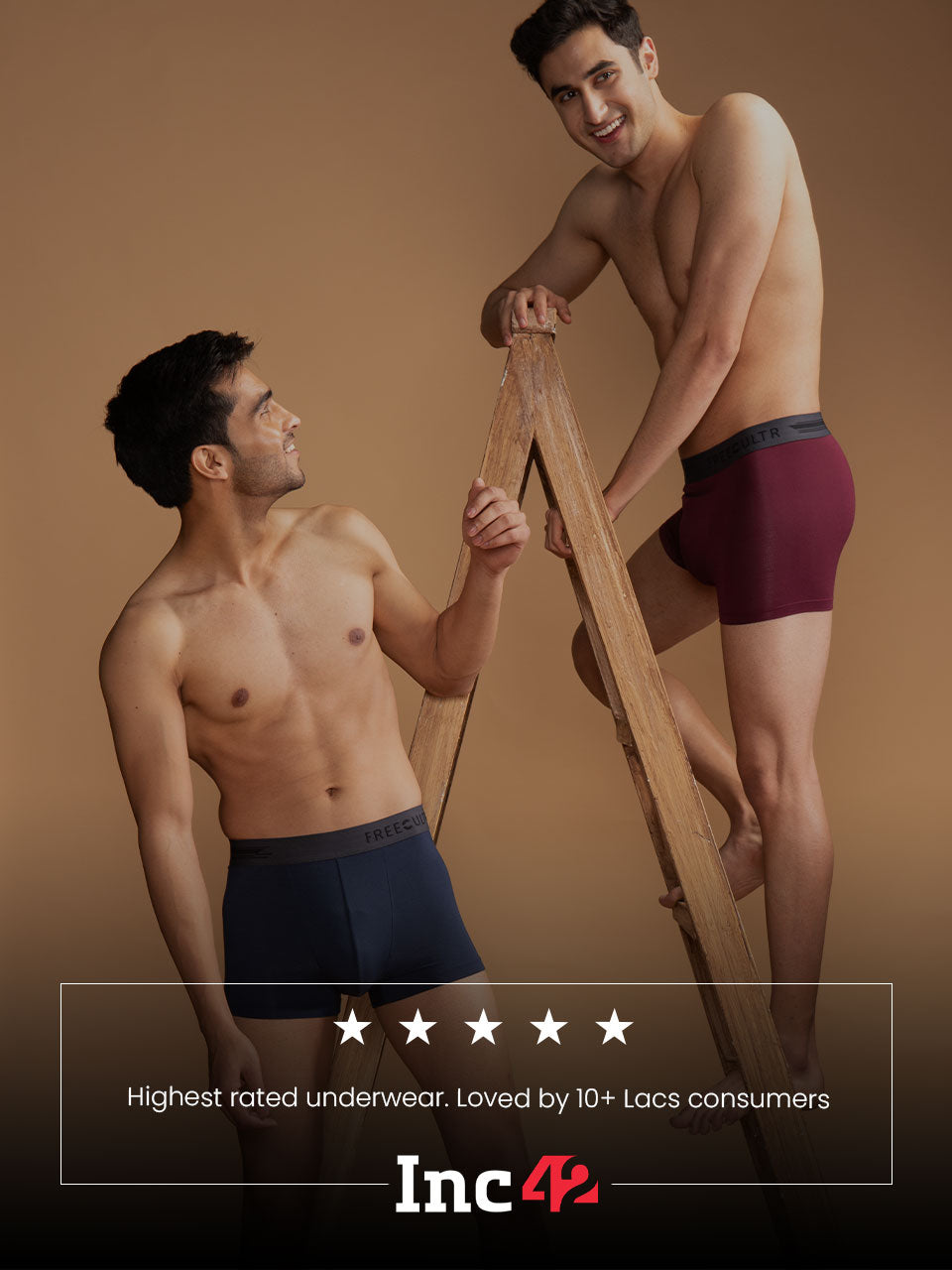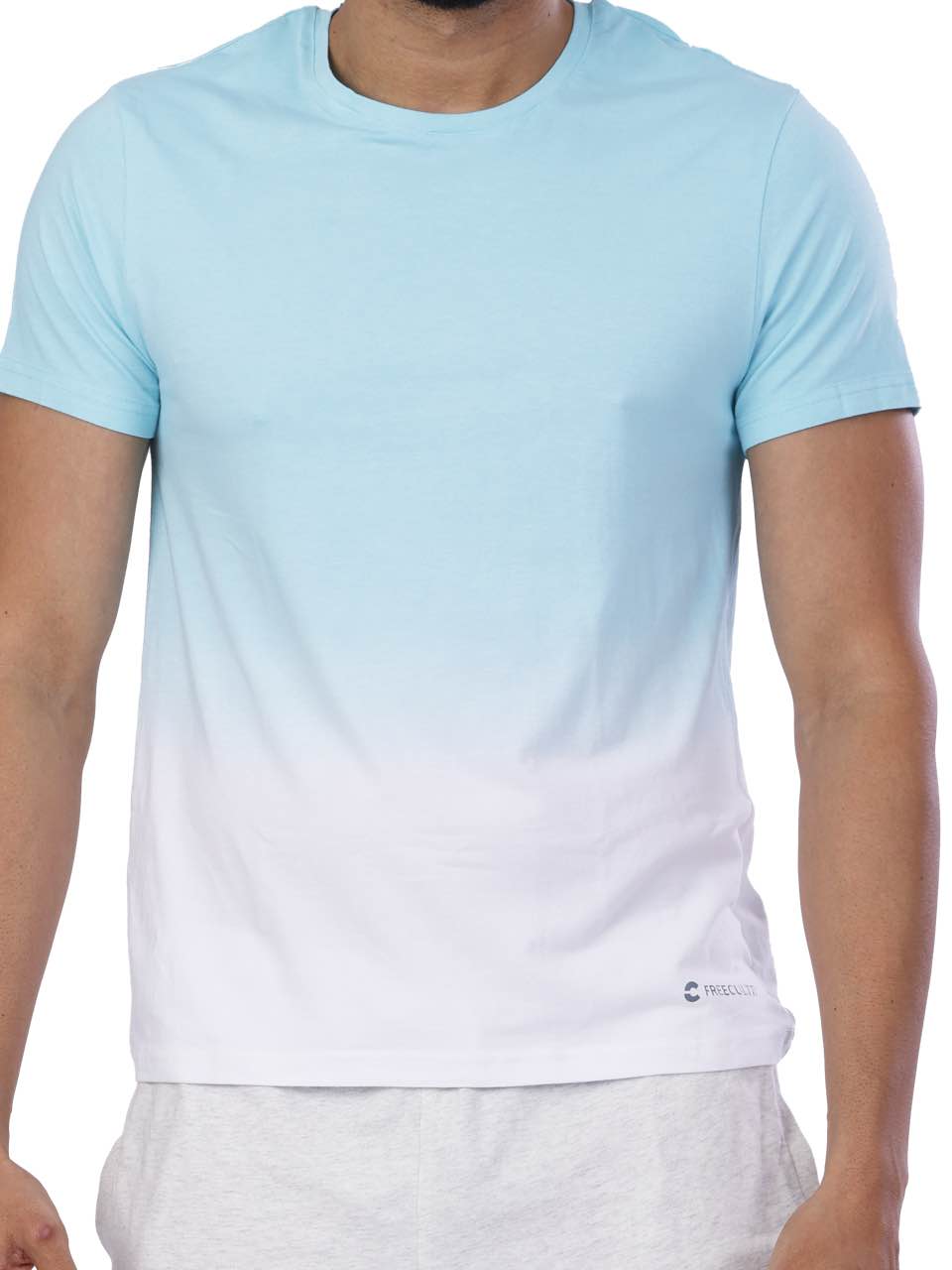Imagine pushing your limits during that intense HIIT session, sweat pouring. Your regular cotton tee becoming a heavy, clingy burden. That's where the science of sports apparel steps in. The modern sports t-shirt has evolved beyond simple cotton; it's now engineered for enhanced performance. Driven by the increasing demand for optimal athletic comfort, fabrics like polyester blends and merino wool are being woven with moisture-wicking technologies to keep you dry and comfortable. We’ll delve into the core technical concepts behind these advanced fabrics, examining their breathability, thermal regulation. Impact on athletic performance, revealing how these innovations are helping athletes of all levels achieve their peak potential.

Understanding the Science Behind Moisture Wicking
Moisture wicking is the process by which a fabric draws moisture away from the skin and transfers it to the outer surface of the material, where it can evaporate. This is crucial for maintaining comfort and performance during physical activity. To comprehend how this works, we need to delve into the properties of different materials and how they interact with moisture.
The key principle at play is capillary action. Capillary action is the ability of a liquid to flow in narrow spaces without the assistance of. In opposition to, external forces like gravity. In fabrics, this happens because of the spaces between the fibers. Materials with smaller spaces and higher surface area generally exhibit better wicking properties.
Hydrophilic (water-attracting) and hydrophobic (water-repelling) properties of fibers also play a significant role. While a completely hydrophobic material might repel water, it won't necessarily wick it away. Often, a combination of both is needed. For instance, a fabric might use hydrophobic fibers on the outside to repel rain while using hydrophilic fibers on the inside to draw sweat away from the skin.
Think of it like this: imagine two straws, one wide and one narrow, placed in a glass of water. The water will rise higher in the narrower straw due to capillary action. Similarly, the structure of the fabric influences how effectively it can move moisture.
The Role of Fabric Types in Performance
Not all fabrics are created equal when it comes to moisture wicking and performance. Here's a comparison of some common materials used in sports t-shirts:
| Fabric Type | Moisture Wicking Ability | Breathability | Durability | Cost | Common Uses |
|---|---|---|---|---|---|
| Polyester | Excellent | Good | High | Moderate | Running shirts, gym wear, outdoor activities |
| Nylon | Very Good | Good | High | Moderate to High | Compression wear, base layers |
| Polypropylene | Excellent | Fair | Good | Low to Moderate | Base layers, thermal underwear |
| Merino Wool | Good | Excellent | Moderate | High | Hiking, skiing, cold-weather activities |
| Cotton | Poor | Good | Moderate | Low | Casual wear (not recommended for intense workouts) |
| Blends (e. G. , Polyester/Spandex) | Good to Excellent (depending on blend) | Good to Excellent | Good to High | Moderate | Versatile; various sports and activities |
Polyester is a synthetic fiber widely used in sports apparel due to its excellent moisture-wicking properties, durability. Relatively low cost. It's also resistant to shrinking and stretching. Many performance t-shirts are made from 100% polyester or a polyester blend.
Nylon is another synthetic fiber known for its strength and elasticity. It wicks moisture well but tends to be more expensive than polyester. Nylon is often used in compression garments and base layers.
Polypropylene is a lightweight synthetic fiber with excellent wicking capabilities. It's often used in base layers designed to keep you dry in cold weather. But, it may not be as breathable as other options.
Merino Wool is a natural fiber that offers good moisture-wicking and temperature regulation. It's also odor-resistant, making it a popular choice for hiking and other outdoor activities. But, it can be more expensive and less durable than synthetic fibers.
Cotton, while comfortable, is not ideal for sports t-shirts because it absorbs moisture and holds onto it, making you feel wet and heavy. This can lead to discomfort and chafing. Avoid cotton during intense workouts.
Blends, such as polyester/spandex, offer a combination of benefits. Spandex adds stretch and flexibility, while polyester provides moisture wicking and durability. These blends are commonly used in a wide range of Activewear.
The Technology Behind Enhanced Performance
Beyond the basic fabric types, various technologies are employed to enhance the performance of sports t-shirts. These technologies aim to improve moisture wicking, breathability, odor control. Overall comfort.
- Wicking Treatments: These are chemical treatments applied to fabrics to enhance their ability to draw moisture away from the skin. These treatments often involve modifying the surface properties of the fibers to make them more hydrophilic.
- Antimicrobial Treatments: These treatments inhibit the growth of bacteria that cause odors. They often involve the use of silver ions or other antimicrobial agents. This is particularly vital for Sports apparel that can become sweaty and prone to bacterial growth.
- Ventilation: Some sports t-shirts incorporate ventilation panels or mesh inserts in strategic areas to improve airflow and breathability. These panels are often located in areas where you tend to sweat the most, such as the back and underarms.
- Seamless Construction: Seamless construction eliminates seams that can cause chafing and irritation, especially during high-intensity activities.
- Compression Technology: Compression garments are designed to provide support to muscles and improve blood flow. They can also help reduce muscle fatigue and soreness.
- UV Protection: Some sports t-shirts offer UV protection to shield your skin from the sun's harmful rays. This is especially crucial for outdoor activities.
An example of a specific technology is Nike Dri-FIT, which uses a high-performance microfiber polyester fabric that wicks sweat away from the body and moves it to the fabric surface, where it evaporates. Another example is Under Armour's HeatGear, which is designed to keep athletes cool, dry. Light during hot weather workouts.
Real-World Applications and Use Cases
The benefits of moisture-wicking sports t-shirts are evident across a wide range of activities:
- Running: Moisture-wicking shirts keep runners dry and comfortable, preventing chafing and reducing the risk of overheating.
- Gym Workouts: During intense workouts, these shirts help regulate body temperature and prevent sweat from weighing you down.
- Hiking and Outdoor Activities: They keep you dry and comfortable in varying weather conditions, reducing the risk of chills and discomfort.
- Team Sports: Many team sports, such as soccer, basketball. Volleyball, require players to wear moisture-wicking apparel for optimal performance.
- Yoga and Pilates: Breathable and moisture-wicking shirts allow for comfortable movement and prevent overheating during these activities.
Consider the experience of a marathon runner. Wearing a cotton t-shirt during a marathon would quickly become soaked with sweat, leading to discomfort, chafing. Potentially hindering performance. A moisture-wicking polyester shirt, on the other hand, would keep the runner dry and comfortable, allowing them to focus on their performance.
Another use case is in the medical field. Some healthcare professionals wear moisture-wicking undershirts under their scrubs to stay cool and dry during long shifts.
Choosing the Right Sports T-Shirt for Your Needs
When selecting a sports t-shirt, consider the following factors:
- Activity: Choose a fabric and design that are appropriate for your activity. For example, a lightweight, breathable shirt is ideal for running, while a more durable shirt might be better for weightlifting.
- Climate: Consider the weather conditions in which you'll be wearing the shirt. A lightweight shirt with ventilation is ideal for hot weather, while a thicker shirt with moisture-wicking properties is better for cold weather.
- Fit: Choose a fit that is comfortable and allows for freedom of movement. Some people prefer a loose fit, while others prefer a more snug fit.
- Features: Consider any additional features that are essential to you, such as antimicrobial treatment, UV protection, or compression technology.
- Budget: Sports t-shirts range in price from affordable to high-end. Set a budget and choose a shirt that meets your needs without breaking the bank.
Read reviews and compare different brands and models to find the best sports t-shirt for your individual needs and preferences. Look for shirts that have been tested and proven to perform well in various conditions. By considering these factors, you can find a sports t-shirt that will enhance your performance and keep you comfortable during your workouts.
Conclusion
The pursuit of peak athletic performance is a journey. Your choice of gear plays a pivotal role. You've learned how sports t-shirts with enhanced performance features and moisture-wicking technology are more than just apparel; they're performance enhancers. Now, it's time to implement this knowledge and elevate your game. Think of your next workout or competition as a testing ground. Experiment with different fabrics and fits to discover what works best for your body and sport. Pay close attention to how these t-shirts impact your comfort, mobility. Overall performance. Remember, consistent training coupled with the right gear will lead to noticeable improvements in your stamina and recovery times. As you integrate these performance-enhancing t-shirts into your routine, define clear metrics for success. Track your workout durations, intensity levels. Recovery periods. By monitoring these factors, you can objectively assess the impact of your clothing choices. Trust your instincts, listen to your body. Stay committed to your goals. The path to athletic excellence is paved with dedication, smart choices. Unwavering belief in yourself. Go out there and conquer your challenges, one sweat-wicking stride at a time!
More Articles
Raglan Sleeves T Shirt – Enhanced Movement & Stylish Design
7 Ways to Elevate Your Look with a T-shirt Dress
10 Tips for Getting the Most from Your Joggers
FAQs
So, what's the big deal with sports T-shirts that wick away moisture? Is it really that much better?
Honestly, yeah, it's a game-changer! Think about it: cotton gets heavy and soggy when you sweat, making you feel gross and potentially even chilling you down when you stop moving. Moisture-wicking fabrics pull that sweat away from your skin, spreading it out so it evaporates faster. You stay drier, more comfortable. Can focus on your workout instead of feeling like you're swimming in your own sweat.
Okay, 'enhanced performance' sounds a bit marketing-y. How does a t-shirt actually improve my performance?
Fair point! It's not magic. Comfort definitely plays a role. When you're not distracted by feeling sticky and uncomfortable, you can concentrate better and push yourself harder. Plus, some performance tees are designed with features like compression or strategic ventilation, which can aid in muscle support and temperature regulation, potentially leading to slight improvements.
What are these fancy fabrics made of? I'm seeing words like 'polyester' and 'spandex' all over the place.
Yep, those are the usual suspects! Polyester is super common because it's durable, lightweight. Doesn't absorb much moisture. Spandex (or Lycra) adds stretch, giving you a better range of motion. You'll often see blends of these, sometimes with other fabrics like nylon, to get the best combination of properties.
Will they make me smell? I've heard some synthetic fabrics can get pretty funky after a while.
That's a valid concern! Some cheaper synthetics can trap odors. Look for shirts treated with antimicrobial or odor-resistant technologies. These treatments help prevent bacteria growth, which is what actually causes the smell. Washing your shirts promptly after a workout also helps a lot!
How do I wash these things? Are there any special instructions I should follow?
Generally, you want to avoid using fabric softener, as it can clog the pores of the fabric and reduce its wicking ability. Wash them in cold water. Either hang them to dry or tumble dry on low heat. Check the garment's label for specific instructions, though – better safe than sorry!
Are they all tight-fitting? I prefer a looser fit when I'm working out.
Nope, not at all! You can find sports T-shirts in all sorts of fits: tight (compression), fitted, or loose. It really comes down to personal preference and what feels most comfortable for you. Try a few different styles to see what you like best.
Is there a big difference between a cheap sports t-shirt and an expensive one? Is it worth spending more?
There can be! With more expensive shirts, you're often paying for higher-quality fabrics, better construction, more advanced moisture-wicking technology. Potentially even features like UV protection or reflective detailing. A cheaper shirt might do the basic job. It might not last as long, feel as comfortable, or perform as well in the long run. Think about how often you'll be using it and how essential performance is to you when making your decision.






